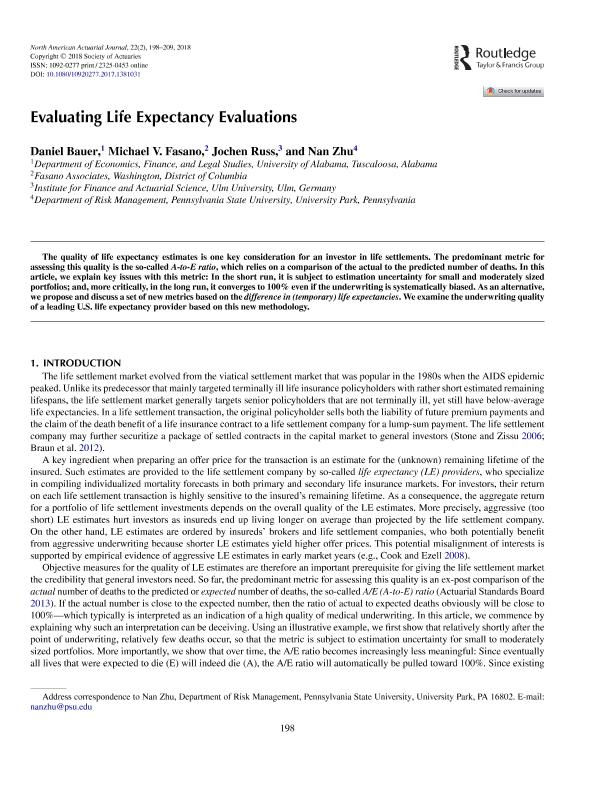Evaluating life expectancy evaluations

Contenido multimedia no disponible por derechos de autor o por acceso restringido. Contacte con la institución para más información.
| Tag | 1 | 2 | Value |
|---|---|---|---|
| LDR | 00000cab a2200000 4500 | ||
| 001 | MAP20180025716 | ||
| 003 | MAP | ||
| 005 | 20180830121931.0 | ||
| 008 | 180808e20180601usa|||p |0|||b|eng d | ||
| 040 | $aMAP$bspa$dMAP | ||
| 084 | $a6 | ||
| 245 | 1 | 0 | $aEvaluating life expectancy evaluations$cDaniel Bauer...[et al.] |
| 520 | $aThe quality of life expectancy estimates is one key consideration for an investor in life settlements. The predominant metric for assessing this quality is the so-called A-to-E ratio, which relies on a comparison of the actual to the predicted number of deaths. In this article, we explain key issues with this metric: In the short run, it is subject to estimation uncertainty for small and moderately sized portfolios; and, more critically, in the long run, it converges to 100% even if the underwriting is systematically biased. As an alternative, we propose and discuss a set of new metrics based on the difference in (temporary) life expectancies. We examine the underwriting quality of a leading U.S. life expectancy provider based on this new methodology | ||
| 650 | 4 | $0MAPA20080580377$aEsperanza de vida | |
| 650 | 4 | $0MAPA20080579258$aCálculo actuarial | |
| 651 | 1 | $0MAPA20080638337$aEstados Unidos | |
| 773 | 0 | $wMAP20077000239$tNorth American actuarial journal$dSchaumburg : Society of Actuaries, 1997-$x1092-0277$g04/06/2018 Tomo 22 Número 2 - 2018 , p. 198-209 |

